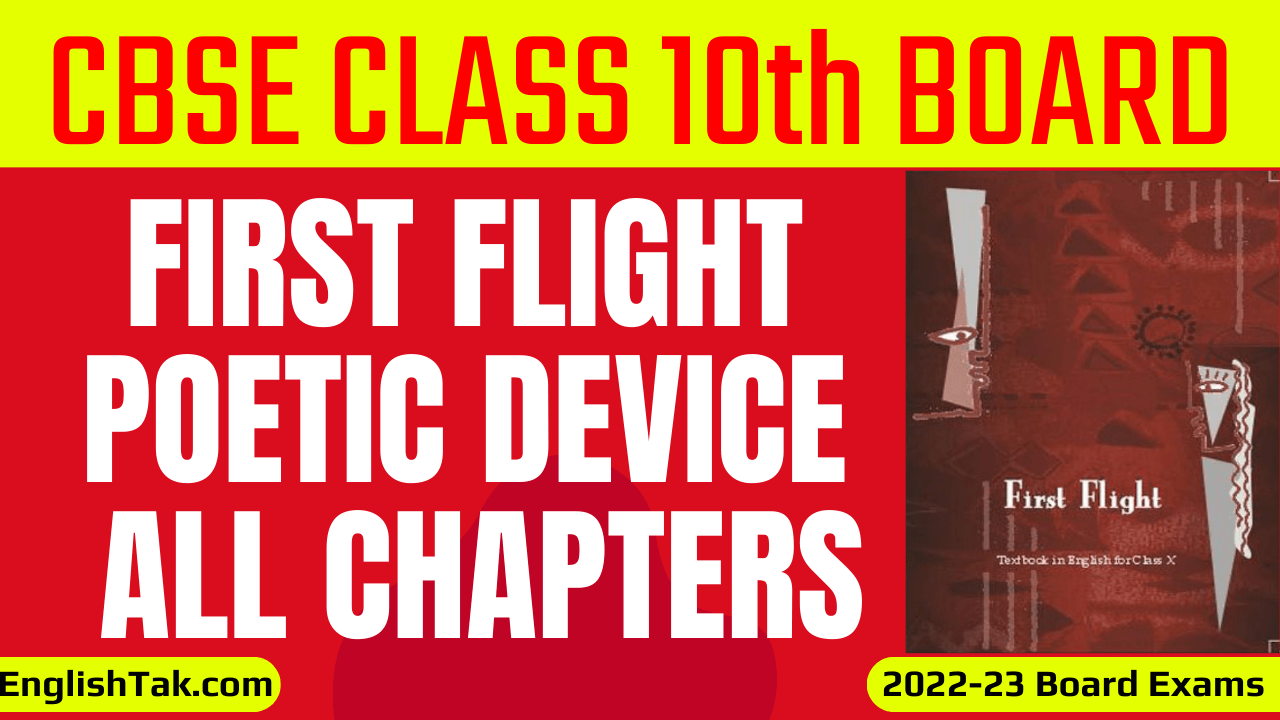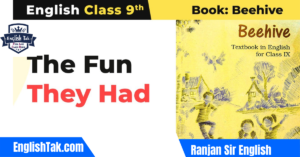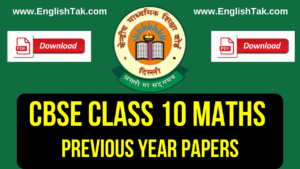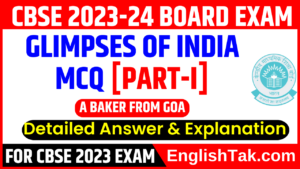![]()
CBSE Class 10 All Chapters Poetic Device
Table of Contents
अगर अब सीबीएसई क्लास 10 या 12 का पेपर देने वाले हैं, तो यह पोस्ट CBSE Class 10 All Chapters Poetic Device आपके लिए इंपोर्टेंट है, क्योंकि यहां पर क्लास 10 के सभी चैप्टर्स के Poetic Device को दिया जा रहा है। आपके एग्जाम में पोएटिक डिवाइस से संबंधित क्वेश्चन पूछे जाते हैं। अगर यह पोस्ट पसंद आए तो अपने दोस्तों को भी शेयर जरूर करें क्योंकि बोर्ड एग्जाम देने वाले हैं।
If you are going to give CBSE class 10 or 12 paper now, then this post is important for you, because here Poetic Device of all the chapters of class 10 is being given. Questions related to poetic device are asked in your exam. If you like this post, then do share it with your friends because the board exams are about to appear.
Important Links for CBSE Board Exams
Download CBSE Class 10th Questions Answer Pdf
GLIMPSES OF INDIA BOARD EXAM 2022 QUESTIONS
CBSE Class 10 English Extract Based Questions Answer 2023 Board Exams
Discursive Passage for CBSE Class 10 – 2022-23 Exam
CBSE English Quiz – Determiners
CBSE Class 10 All Chapters Poetic Device
POEM 1: DUST OF SNOW
Inversion – when the structure of a sentence is changed by the poet to create rhyme, this poetic license is called inversion. In stanza 1, inversion can be seen.
Assonance – the prominence of a vowel sound throughout a line is called assonance. In stanza 1, line 2 – “Shook down on me” – ‘o’ sound is prominent.
Enjambment – when the same sentence continues to the next line without the use of any punctuation marks, it is called enjambment. It has been used throughout the poem.
Alliteration– the occurrence of the same letter or sound at the beginning of adjacent or closely connected words.
Rhyme Scheme– ABABCDCD
POEM 2: FIRE AND ICE
Assonance – it is repetition of vowel sounds in same line. The repetition is at different places in different words.
Example- The long sound of “o” in “I hold with those who favour fire”
Alliteration – alliteration is the repetition of a consonant sound at the start of two or more closely placed words.
Example- The sound of “f” in “favour fire”, “w” in “world will”
Imagery– Imagery is used to make readers perceive things involving their five senses.
Example- “Some say the world will end in fire”
“To say that for destruction ice Is also great”
Anaphora– the repetition of a word or expression at the start of two or more consecutive lines.
Example – “Some say” is repeated at the start of lines 1 and 2.
Personification– Personification is to give human qualities to inanimate objects. In this poem, “fire” and “ice” are capable of destruction. Thus, the poet personifies fire and ice by giving them mind and power to destroy anything.
Enjambment– it is defined as the thought or clause that does not come to an end at a line break, rather it moves over to the next line.
Example- “From what I’ve tasted of desire
I hold with those who favor fire”
Symbolism – Symbolism is the use of symbols to signify some ideas by giving them symbolic meaning different from their literal meaning.
Fire – symbolizes desire with human emotions like lust, fury, cruelty, greed etc.
Ice – symbolizes the hatred with cold feelings of humans such as rigidity, jealousy, indifference, intolerance etc.
Rhyme Scheme : ABAABCBCB
Read More
Online Free Quiz for CBSE Class 10th Board Exams
POEM 3: A TIGER IN THE ZOO
Personification: The tiger is personified because the poet refers him as ‘he’.
Metaphor: Tiger’s paws are compared with velvet (pads of velvet)
Enjambment: Sentence is continuing to next line without any punctuation mark.
Imagery: poet tries to create an image about the tiger (He stalks in his vivid stripes The few steps of his cage)
Consonance: use of ‘s’ sound (stalks, his, stripes)
Assonance: use of vowel sound ‘I’ (in his vivid stripes)
Oxymoron: use of adjectives opposite in meaning (quiet rage)
Enjambment: Line continues to next line without punctuation marks. (Sliding through….deer pass)
Alliteration: use of sound ‘p’ at the start of two words (plump pass)
Imagery: The poet has tries to create an image of tiger’s activities (lurking in shadow).
Enjambment: Line continues to next line without punctuation marks (He should be snarling around houses At the jungle’s edge,)
Onomatopoeia: using words which denote sound (snarling)
Assonance: use of vowel sound ‘o’ and ‘I’ (should, around, houses), (Baring, his, white, his)
Consonance: use of consonant sound ‘s’ (his, fangs, his, claws)
Personification: The tiger is personified because the poet refers him as ‘he’.
Assonance: use of vowel sound ‘e’ (he, locked, concrete, cell)
Consonance: use of consonant sound ‘s’ (his, strength, bars)
Alliteration: use of sound ‘b’ at the start of two words (behind bars)
Enjambment: Line three continues to line four without any punctuation mark. (And stares with his brilliant eyes At the brilliant stars.)
Alliteration: use of sound ‘h’ in the starting of two words (he hears)
Assonance: use of ‘I’ sound (with, his, brilliant)
Rhyme Scheme: ABCB
Must Read
POEM 4: HOW TO TELL WILD ANIMALS
Enjambment: Continuation of a sentence to the next line (and if there…..tawny beast)
Inversion: Change in the format of a sentence (if there should to you advance)
Assonance: use of vowel sound ’o’ (you should go, should to you, roars,)
Allusion: Reference to a famous thing, place, species of animal, etc (Asian Lion)
Alliteration: repetition of consonant sound ‘r’ at start of two or more closely connected words (roaming round)
Inversion: Change in the format of a sentence (The Bengal Tiger to discern)
Allusion: Reference to a famous thing, place, species of animal, etc (Bengal Tiger)
Assonance: Use of vowel sound ’o’ (or if some time when roaming round)
Alliteration: use of consonant sound ‘h’ in the beginning of two words (he has)
Poetic license: A liberty to the poet to change the spellings in order to create rhyme or rhythm in a poem (use of lept instead of leapt)
Repetition: use of ‘lep’ word in the last line.
Assonance: use of vowel sound ‘o’ (strolling-forth-you, whose-spot, do no good to roar)
Consonance: use of ‘l’ sound (he’ll only leplep)
Enjambment: Continuation of a sentence to the next line (if you were walking….creature there)
Alliteration: use of ‘w’ sound (when-walking), use of ‘h’ sound (who- hugs), use of ‘b’ sound (be-bear)
Assonance: use of vowel ‘e’ (meet a creature there)
Alliteration: use of consonant sound ‘n’ (novice-nonplus), use of ‘th’ sound (the-thus)
Enjambment: continuation of sentence to the next line (though to distinguish….might nonplus, The crocodile…..hyena thus)
Alliteration: use of ‘h’ sound (he hasn’t)
Consonance: use of ‘g’ sound (single wing)
Rhyme Scheme: ABABCC
Discursive Passage for CBSE Class 10 – 2022-23 Exam
POEM 5: THE BALL POEM
Anaphora: use of repeated words in two or more lines (What is the boy… what, what and merrily bouncing… merrily over)
Assonance: repeated use of vowel ‘o’ (boy, now, who, lost)
Imagery: when poet says merrily bouncing down the street
Repetition: ‘what’ is repeated
Repetition: use of word ‘ball’
Asyndeton: no use of conjunction in a sentence (A dime, another ball, is worthless)
Alliteration: use of sound ‘b’ at the start of two consecutive words (buys a ball back)
Assonance: use of vowel sound ‘e’ (He is learning, well behind his desperate eyes)
Repetition: ‘ball’ word is repeated
Rhyme scheme: There is no rhyme scheme followed in the poem.
POEM 6: AMANDA
Anaphora: Repeated use of a word at start of two or more lines (don’t bite… don’t hunch)
Assonance: use of vowel sound ‘o’ (don’t hunch your shoulders)
Metaphor: use of word emerald sea for green colour of sea being similar to the colour of emrald
Repetition: use of word ‘Amanda’
Imagery: drifting blissfully
Alliteration: ‘Stop that slouching and sit up straight’ – ‘s’ sound is being repeated at the start of closely placed words.
Allusion: ‘mermaid’ is a well known imaginary creature.
Anaphora: Repeated use of a word at start of two or more lines (did you finish….did you tidy)
Assonance: use of vowel sound ‘o’ (Thought, told, you, your, shoes)
Repetition: use of word ‘Amanda’
Metaphor: silence is golden – silence is said to be glorious like golden colour
freedom is sweet – freedom is said to be sweet in taste.
Allusion: use of famous fairy tale character Rapunzel
Assonance: use of vowel sound ‘e’ and ‘o’ (Will you please look at me when I’m speaking to you
Consonance: use of sound ‘r’ (I am Rapunzel; I have not a care …..Bright hair)
Repetition: use of word ‘Amanda’
Alliteration: ‘Stop that sulking’ – ‘s’ sound is repeated at the start of closely placed words
Rhyme Scheme: AABA CCCAADAEEEAAFAGGGAAHA
CBSE Class 10 English Extract Based Questions Answer 2023 Board Exams
POEM 7: ANIMALS
Assonance: use of vowel sound ‘I’ (I, think, I, live, with, animals)
Repetition: use of the word ‘long’
Anaphora: ‘I’ word used at the start of two consecutive lines
Metaphor: The inner qualities of humans are referred to as tokens
I wonder where they get those tokens,
Did I pass that way huge times ago and negligently drop them?
Rhyme Scheme: There is no rhyme scheme followed in the poem.
POEM 8: TREES
Personification: Sun bury it’s feet. Sun has been personified.
Enjambment: Continuation of a sentence to the next line (the forest that was…… trees by morning).
Anaphora: 2 lines begin with ‘no’
Imagery: “The trees inside are moving out into the forest” – shows kinestatic imagery
Enjambment: continuation of sentence to the next line (the leaves strain……. Half dazed)
Simile: trees compared to patients (like newly discharged patients)
Personification: twigs and boughs have been personified.
Alliteration: ‘long letters’ forest from’ ‘sky still’ ‘leaves and lichen’
Enjambment: continuation of sentence to the next line (doors open….the house)
Imagery: the poet has tried to create a scene in which she is observing all the things happening (the night is fresh……into the rooms)
Simile: The moon is compared to a mirror (Moon is broken like a mirror)
CBSE Class 10 All Chapters Poetic Device pdf Download
POEM 9: FOG
Metaphor: Fog is compared to cat (On little cat feet)
Enjambment: When a sentence continues to next line (It sits looking….. then moves on)
Personification: fog has been personified – Fog comes, it sits
Rhyme scheme: There is no rhyme scheme followed. Poem is in free verse
Class 10 Extract Based Questions
POEM 10: THE TALE OF CUSTARD THE DRAGON
Repetition: use of the word ‘little’
Oxymoron: use of two words with opposite meanings ‘ “pet dragon”
Anaphora: repeated use of word at the start of two consecutive lines. (And a little ….And a realio)
Refrain: Repetition of a sentence again and again (And a realio, trulio,)
Poetic license: realio, trulio for real, true. The spellings have been changed to create a musical effect
Simile: dog compared to mustard “And the little yellow dog was sharp as Mustard”
Alliteration: “coward, and she called him Custard” – “c” sound
Anaphora: repeated use of word at the start of two consecutive lines (And the little grey…And the little yellow)
Repetition: use of word little
Simile: Dragon’s mouth is compared with fireplace (mouth like a fireplace)
Refrain: Repetition of a sentence again and again (And a realio, trulio,)
Metaphor: “chimney for a nose”. The nose is like a chimney.
Alliteration: Belinda was as brave as a barrel full of bears “b” sound is repeated
Simile: Belinda’s bravery is compared to that of a barrel full of bears (as a barrel full of bears), Mustard’s bravery is compared to that of an angry tiger (Mustard was as brave as a tiger in a rage)
Assonance: use of vowel sound ‘a’ (Belinda was as brave as a barrel full of bears)
Refrain: Repetition of a sentence again and again (And a realio, trulio,)
Repetition: use of the word ‘tickled him’
Allusion: reference to any person or place (Percival)
Personification: Ink, Blink and Mustard, they rudely called him Percival
Onomatopoeia: usage of sound words to create a dramatic effect (giggled, weeck)
Repetition: Custard cried for a nice safe cage
Consonance: use of consonant sound ‘s’ (Suddenly, suddenly they heard a nasty sound)
Onomatopoeia: usage of sound words to create a dramatic effect (Mustard growled, Meowch, cried ink)
Poetic license: window is written as ‘winda’ to create rhyme.
Alliteration: beard was black “b”, he held his “h”
Imagery: An image is created about the appearance of the pirate.
Transferred epithet: terrified yelp
Repetition: help help
Poetic license: use of the word mousehold to rhyme with household
Simile: sound of dragon is compared with sound of engine (snorting like an engine), Clashed his tail like irons in a dungeon, dragon’s attack on pirate is compared to robin bird (like a robin at a worm)
Onomatopoeia: usage of sound words to create a dramatic effect (clatter, clank, jangling)
Imagery: The attack by the dragon is expressed in a way to make an image in our minds.
Alliteration: gulped some grog “g”
Imagery: They have shown the reaction and actions made by the pirate on seeing the dragon.
Alliteration: glee did gyrate “g”
Assonance: use of vowel sound ‘o’ (no one mourned for), use of vowel sound ‘I’ (ink and blink in glee did), use of vowel sound ‘a’ (that ate the pirate)
Refrain: Repetition of a sentence again and again (And a realio, trulio)
Repetition: stanza has been repeated
Rhyme scheme: AABB
CBSE Class 10 All Chapters Poetic Device
POEM 11: FOR ANNE GREGORY
Metaphor: honey-coloured Ramparts at your ear (Anne’s hair is compared to the ramparts of a fort)
Alliteration: repetition of consonant ‘s’ sound at the start of two consecutive words. (Set Such)
Anaphora: Repeated use of a word at the beginning of two lines (That he….That only god)
Alliteration: he had, your yellow
Rhyme Scheme: ABCBDB
Important English Questions for CBSE Board Exams 20223
Top 20 English Editing Rules – (IXth to XIIth)
A Letter to God – Summary, Theme & About the Author
NELSON MANDELA: LONG WALK TO FREEDOM
Determiner MCQ Online Test For 8th 9th & 10th
Tense MCQ Online Test For 8th 9th & 10th
GLIMPSES OF INDIA BOARD EXAM 2022 QUESTIONS
Letters to The Editor for classes 8 to 12






